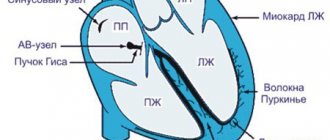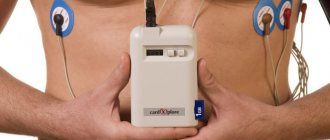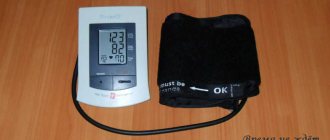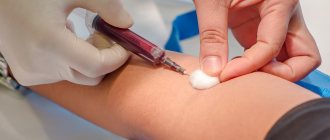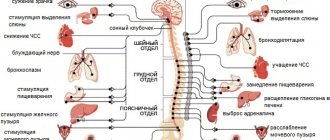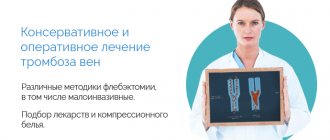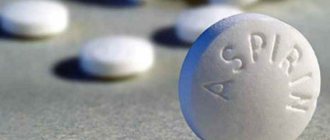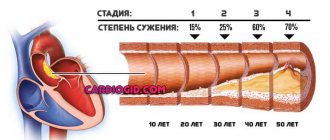24-hour Holter ECG monitoring is a popular method of comprehensive cardiac examination. Compared to an ECG, it allows you to identify changes in the functioning of the heart muscle, register all possible variants of arrhythmias, determine the impact of physical activity on the body and receive expert recommendations from a cardiologist. Daily ECG diagnostics can reveal manifestations of pathology that are not obvious at first glance and allow the initiation of effective therapy.
What is the essence of the technique?
The technique is based on ECG (electrocardiography), which is carried out over a long period of time - from one day to seven. A special device - a recorder (or registrar) - records ECG readings for the entire period of wearing. Recording is most often carried out through 2-3 (up to 12) channels, that is, electrodes. The recording is stored in different ways - either on magnetic tape or in the electronic memory of the device.
Read also: Learning to brew coffee beans at home
In addition, recording can be carried out throughout the allotted time without interruption, or only excerpts (events) are noted. The device itself is attached using a belt on the belt.
In most cases, multichannel data obtained by Holter do not coincide with the results of a surface ECG, so both of these studies are performed.
Cardiologists at our clinic use this type of diagnostics of heart problems along with ECG. Before conducting a Holter examination, our doctor will tell you in detail how to use the device correctly and explain all the nuances of Holter monitoring that you need to know.
Why does the doctor suggest re-hanging the device after some time?
Holter monitoring is simply an irreplaceable method when it comes to monitoring the treatment of arrhythmia and ischemia , and assessing its effectiveness. Typically, the cardiologist prescribes a repeat study no earlier than a month after the start of therapy. If the number of episodes of arrhythmia has decreased, the blood supply to the myocardium has improved - the doctor has guessed the treatment, if not, it is possible to change the drugs or their dosage. And after some time, repeat the study. What to do, treatment of arrhythmia requires a scrupulous approach.
When is Holter ECG prescribed?
The Holter research method is recommended for people of all ages, including pregnant women. Fainting, dizziness, discomfort in the heart area, attacks of irregular heart function, palpitations, shortness of breath - all these symptoms are subject to daily Holter ECG monitoring.
In relation to the established nosology, this diagnostic procedure is indicated for the following diseases:
- heart defects;
- diseases of the endocrine system;
- obesity;
- acute or chronic heart failure;
- previous myocardial infarction;
- arterial hypertension;
- hypertension that is not amenable to therapeutic treatment.
It is also advisable to do a Holter ECG to monitor the operation of the pacemaker.
Stages of preparation for the examination and features of its implementation
In order for the technique to show reliable results, the patient should prepare for a procedure that will last for 24 hours or 3 or more days. Before the procedure, it is necessary to take a shower, because during the examination the patient must not remove the equipment or wet it with water. You should remove metal jewelry and accessories (watches, earrings, pendants), as metal negatively affects the accuracy of cardio readings. During the procedure, you need to wear comfortable clothes, preferably cotton.
For proper operation of the device, water should not be allowed to get on the equipment; contact of the equipment with other devices that create magnetic fields around them should be avoided. You must carry the recorder carefully so as not to damage its integrity: you must not drop or hit it.
The equipment consists of 2 parts - a stationary decoder and a recording device that takes readings. The electrodes are fixed to the skin.
A full-scale heart study is carried out while the patient leads his usual lifestyle, prepares food, runs, sleeps, eats, and rests. Everything that the patient does during the monitoring process is recorded in the diary. The time spent on a specific action is recorded. You can characterize your condition using three indicators: worsened, improved, or remained unchanged.
Rules and recommendations during a Holter ECG: first, you should not exhaust yourself with physical activity, because there is a risk that the electrodes will detach from the skin and the diagnostic results will be inaccurate: second, the patient should avoid stressful situations; third, it is undesirable to travel, fly on an airplane or go on attractions during the examination; fourth, the device should not be exposed to strong temperature changes; fifth, you should protect the recorder from moisture and water.
The patient should lie on his back so that the location of the electrodes is not disturbed. If your back hurts, you can turn over on your side, but at the same time monitor the operation of the device. This technique is considered safe; it does not cause complications or pathological changes. Cardiac registration should not be prescribed to people with high blood pressure, left ventricular diastolic dysfunction, organ dysfunction, acquired heart defects, asymptomatic myocardial ischemia, angina pectoris (chest discomfort).
Best materials of the month
- Coronaviruses: SARS-CoV-2 (COVID-19)
- Antibiotics for the prevention and treatment of COVID-19: how effective are they?
- The most common "office" diseases
- Does vodka kill coronavirus?
- How to stay alive on our roads?
Examination diary
An important point in obtaining high-quality research results is keeping a diary. It is imperative to record important moments during the day. For example:
- Taking medications
- Eating
- Dream
- Stress
- Activities
It is worth indicating the moments of change of activity, moments of ailments and unpleasant symptoms, as well as their exact time.
Recommendations for conducting a Holter study
To obtain accurate results, it is important to properly prepare for daily monitoring. Typically, medical professionals give the following recommendations:
- Before the procedure, you need to take a bath to thoroughly cleanse the skin. At the same time, after a shower you should not lubricate your body with cream so that the surface remains dry;
- men with chest hair need to shave it off. This is important not only for painless removal of the electrodes, but also for their better fixation;
- Sometimes it is necessary to discontinue certain medications. Usually these are medications that smooth out arrhythmia and equalize blood pressure. Therefore, before the procedure, you should inform your doctor about the medications you are taking. If no additional instructions are received, then the recommended drugs are allowed to be used in the usual dosage;
- There are times when there is a need to purchase batteries for the device. In this case, it is necessary to take into account the marking of the halter. You need to choose alkaline batteries;
- Since the electrodes are attached to the skin with an adhesive plaster, the presence of an allergic reaction to it must be taken into account. If you are hypersensitive to adhesive plaster, it is recommended to choose a hypoallergenic product. Its silk base eliminates negative effects on human skin.
It is important to clarify that there is no allergic reaction to the material from which the electrodes are made.
The patient is recommended to get a good night's sleep before the examination; his food intake should not differ from his usual diet. Before the examination, it is important for the patient to wear natural clothing to prevent overheating of the body. In addition, it should not include metal accessories.
How is data obtained during Holter monitoring analyzed?
The data collected by the device is processed using special computer programs, but there are no uniform standards for data analysis yet, so all indicators must be reviewed by a doctor. When deciphering Holter indicators, the following parameters must be indicated:
- heart rhythm and its disorders;
- pauses in rhythms;
- interval changes;
- correlation between Holter indicators and the patient's diary.
Each change in heart rate should be illustrated by the corresponding moment on the cardiogram tape.
Mechanism of operation
The result of the latest developments has been the appearance on the market of devices with multifunctional monitoring, which, in addition to the ECG, record blood pressure levels and other physiological parameters.
The mechanism of operation of 24-hour cardiac monitors is identical to an ECG device. Sensors are fixed on the patient’s body, with the help of which continuous (or episodic in case of multi-day fragmented monitoring of events) recording of the electrical activity of the myocardium occurs. Through the wires, the indicators are transmitted to the recorder with a memory card. The latest models provide online data transfer function.
Decrypted data
On the results sheet you will see the following indicators.
| Index | Norm |
| Average heart rate during the day | 60–100 beats per minute |
| Average heart rate at night and during daytime sleep | 41–81 beats/min |
| Daily graph of heart rate changes | Changes when changing activities |
| Number of supraventricular extrasystoles | Up to 960 supraventricular extrasystoles per day (up to 40 pcs. per hour) A slight excess of the norm (up to 1200 pcs. per day) does not pose a threat to life and health |
| Number of ventricular extrasystoles | The absolute norm is 0. The permissible quantity that does not threaten life and health is 200 pcs. per day |
| The duration of the QT and PQ intervals and the schedule of their changes. | Normal QT interval: 340–450 ms (0.34–0.45 s) for women and 340–430 ms for men PQ – 120–200 ms |
Note! The norms indicated in the table are averaged and do not take into account age and individual characteristics of the body. Ask your doctor about the norm for you personally.
Types of blood pressure monitoring
There are two ways to monitor your heart:
- Full-scale monitoring - ABPM Holter - a continuous 3-day study, as a result of which various pathologies are identified, including their early stages. More than 100 thousand heart beats are recorded, blood pressure readings are recorded;
- Fragmentary monitoring of cardiac activity - an electrocardiogram (ECG) - is capable of recording a negligible fraction of heart beats, about 50. Accordingly, the general idea of the presence of a potential health problem is not fully objective and relevant at the current time. This study is prescribed for patients who do not experience regular pain in the heart area.
Holter ABPM is a study that is indicated for patients who suffer from constant pain in the sternum from the heart, tingling or pinching, and a feeling of cardiac discomfort.
When is heart monitoring performed?
ECG monitoring is often recommended by your doctor if you experience warning symptoms such as rapid heartbeat, fainting, or episodes of shortness of breath that may indicate an abnormal heart rhythm.
Indications for examination may also be lack of improvement in well-being and persistent heart problems despite treatment. There are situations when heart monitoring is carried out despite the absence of symptoms indicating alarming changes. This applies to patients with coronary heart disease, cardiomyopathy or after a heart attack. When analyzing the results, the doctor focuses on the ST segment. If it is oblique or horizontal, it may indicate myocardial ischemia. A Holter ECG study is especially important if arrhythmia is suspected. Thanks to it, you can assess the level of its development and adjust the treatment method accordingly. Treatment is determined, among other things, by the types of symptoms present in the patient and the duration of the disorder. Holter also monitors heart function at night, which is not allowed by traditional testing. For many patients, symptoms begin or worsen at night while sleeping. Patients with implanted pacemakers may also participate in the study. This allows you to evaluate the improvement and proper functioning of the heart muscle.
What is not allowed with Holter monitoring?
- On the day of the diagnosis, it is not recommended to wear underwear and clothing made from fabrics containing silk or synthetics, which have the property of being electrified. Choose everything made exclusively from cotton.
- Modern sensors and the recorder itself are very light and do not impede the patient’s movements, however, you need to be careful and handle them with care. Do not expose the device to high temperatures, shocks, drop it from a height, etc.
- Please be patient and do not shower or bathe while wearing precision equipment.
- Physical activity is not shown, since the sensor electrodes may move and recording will not work.
- If you are wearing a Holter monitoring device, stay away from transformer boxes and powerful power lines.
- Another piece of advice from doctors is that on the eve of the procedure you should not use hair sprays, mousses, foams or hair styling gels.
How to wear a halter correctly
During the diagnostic period, it is necessary to ensure that the device is not overcooled and does not come under the influence of a magnetic field. You need to follow your doctor's recommendations and ensure that the electrode is firmly attached to the body. In rare cases, the cardiologist decides to use a portable recorder for diagnosis, recording data “on demand”.
It is very important to understand how to remove a halter correctly. You need to check with your doctor in advance about the order in which you should proceed. In most cases, it is enough to simply peel off the sensors and remove the device. Even when the battery is disconnected, the received data remains in memory.
Actions and sensations during the day
During daily monitoring, the patient should keep a daily diary, which should indicate the actions performed during the examination period. In the column “Other actions during the day”, the actions performed, the time of their implementation and the sensations to which you want to draw the doctor’s attention are noted in detail. It is important to record the state of rest or physical activity (movement on the street and indoors), as well as emotional experiences and stressful situations during the day, the time of meals and medications.
How to Prepare for a Heart Study
Holter monitoring usually does not require special preparation from the patient. However, it is recommended to take a bath before the examination, as it is better not to do this during the test so that the device does not come into direct contact with water. The housing must not be lubricated, as this will impair the adhesion of the electrodes. Men should get rid of chest hair, which will ensure proper electrical conductivity of the skin. During the examination, you should not change your daily habits; you should do the same as on any other day. However, do not use electric pads and limit the use of your mobile phone as this may interfere with the camera's performance.
